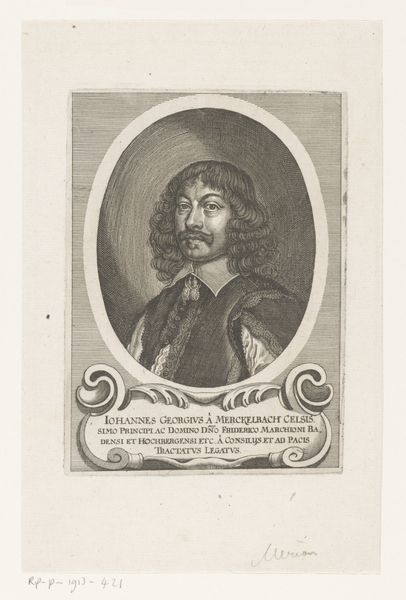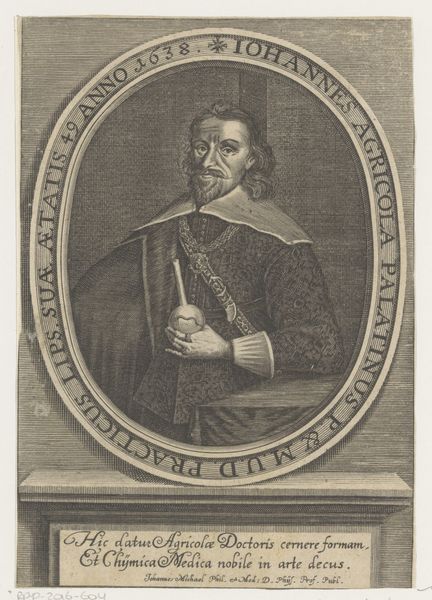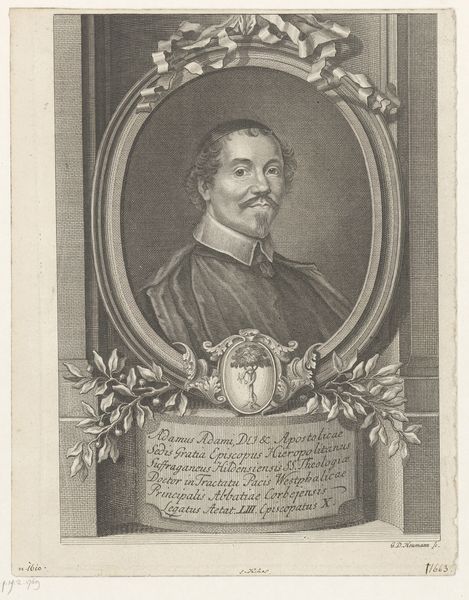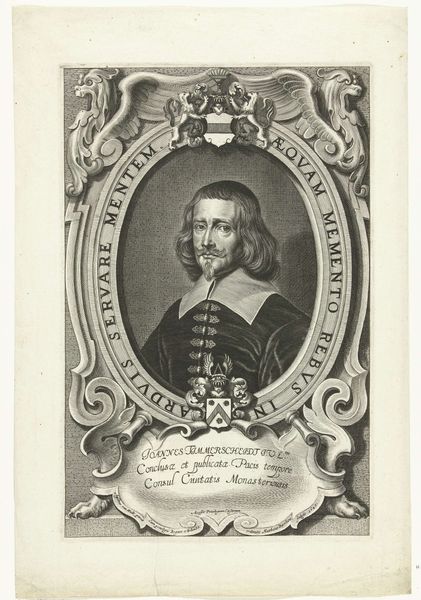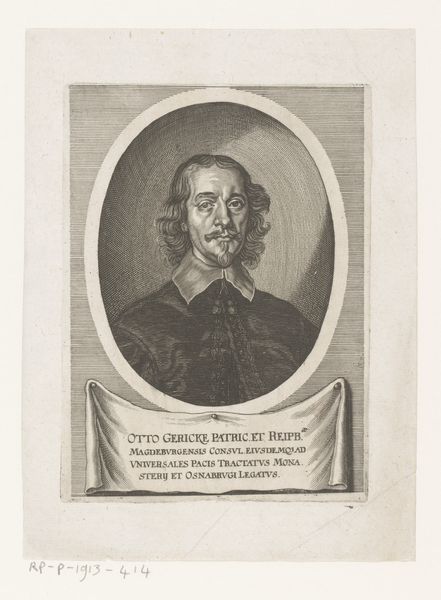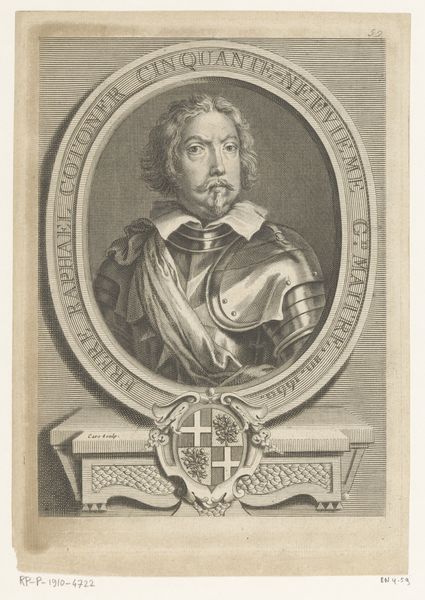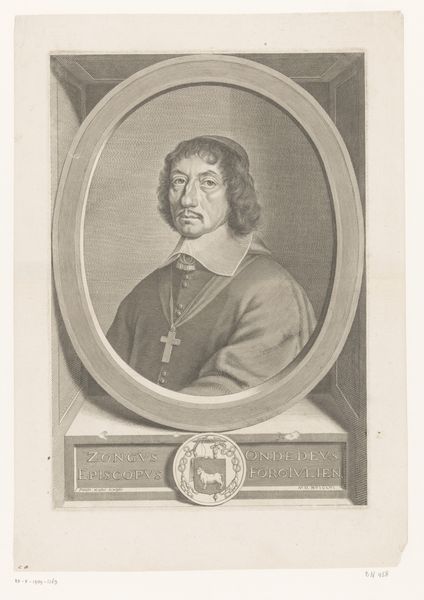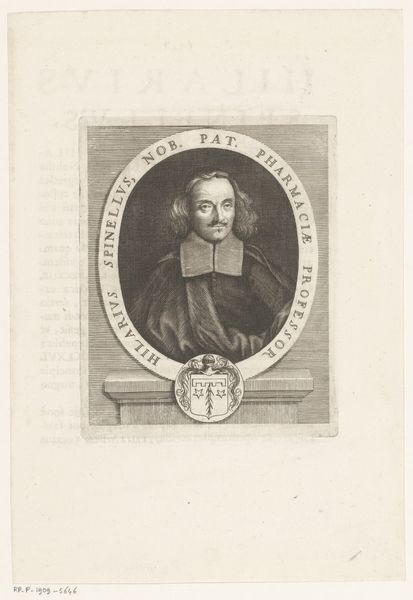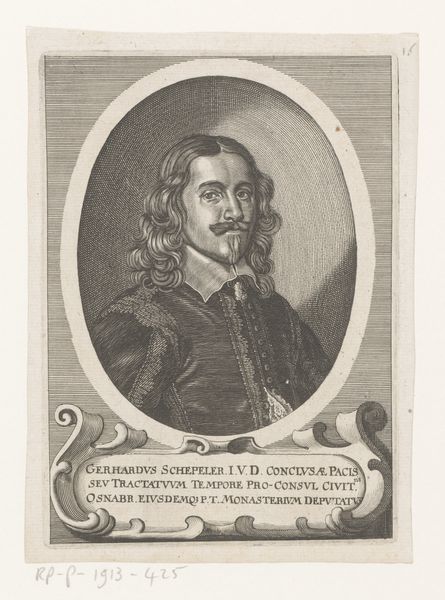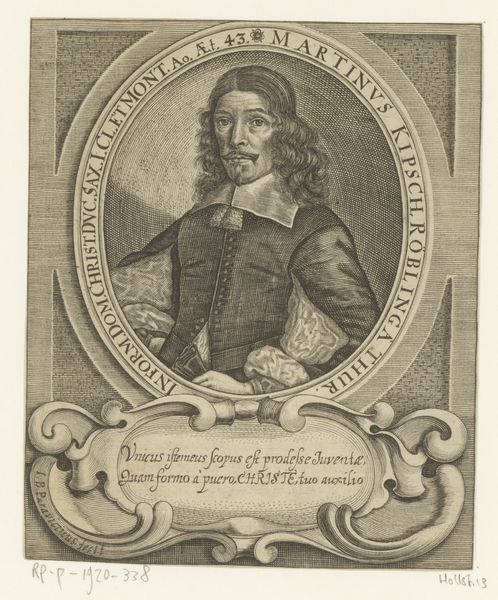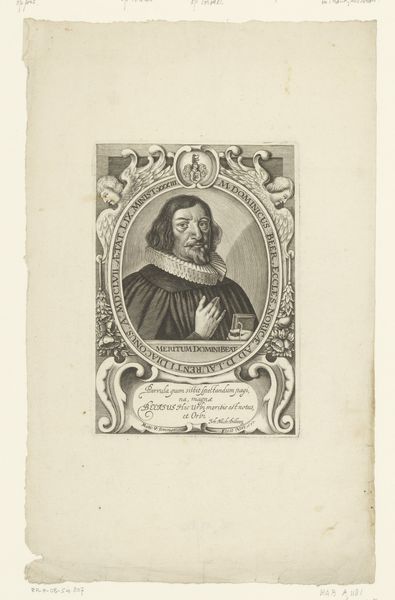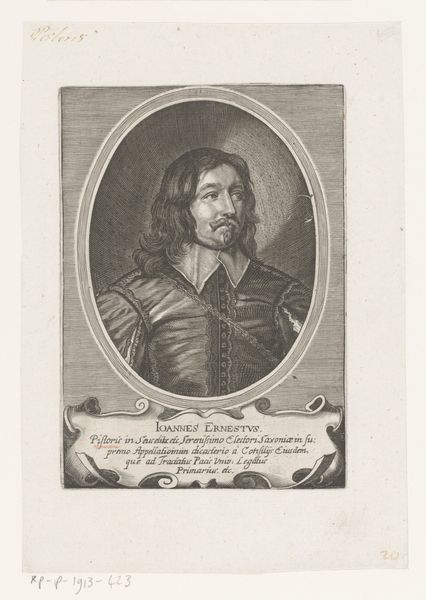
print, engraving
#
portrait
#
baroque
# print
#
old engraving style
#
caricature
#
limited contrast and shading
#
portrait drawing
#
history-painting
#
engraving
Dimensions: height 165 mm, width 106 mm
Copyright: Rijks Museum: Open Domain
Editor: This engraving is a portrait of Jean-Louis Guez de Balzac, and it's estimated to be from somewhere between 1600 and 1667. It’s by Michel Lasne and it’s currently housed in the Rijksmuseum. What strikes me is how the frame seems to compete for attention with the portrait itself. What do you make of this work? Curator: The ornate frame you mention is crucial. Portraits of this era weren't just about likeness; they were statements of social standing. How does the frame, with its Latin inscriptions and decorative elements, contribute to constructing Balzac's public image? Who was Balzac, and what did his contemporaries think about him? Editor: Balzac was a famous writer and a founder of French Classicism. The inscription talks about his words… So, was this image created for a specific political reason or at a particular point in his career to either bolster or perhaps even satirize his reputation? Curator: Precisely! The context is everything. Prints like this were often commissioned to circulate among elite circles, influencing public opinion. Consider also that the prints themselves contribute to cultural narratives and were, effectively, the mass media of the era. Do you get a sense of who he was trying to reach, and for what reason? Editor: It feels almost like a Baroque-era PR campaign, crafted to present Balzac in a very particular, elevated light to other intellectuals and potential patrons, making a statement about his influence and intellect. The trumpet flourishes also scream for attention, drawing one to Balzac’s status. Curator: Exactly. Seeing it as a carefully crafted campaign clarifies how portraiture actively shapes historical perceptions, reminding us these images are not objective records but constructed representations deeply embedded in their social and political contexts. Thank you, Editor, for your interesting perspective. Editor: And thank you, Curator. I definitely learned a great deal about considering how the circulation of art can impact its legacy.
Comments
No comments
Be the first to comment and join the conversation on the ultimate creative platform.
